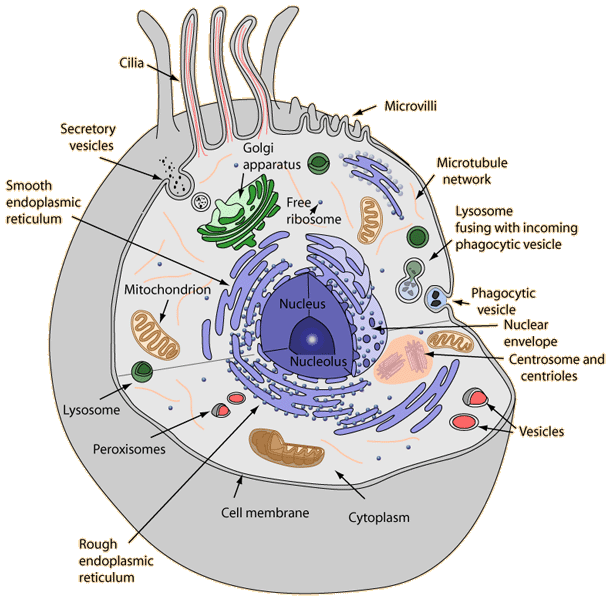The Eukaryotic Cell

This sketch of a eukaryotic cell is modeled after illustrations in Hickman, et al. and Audesirk& Audesirk. It is intended to show the types of organelles in cells, although no single cell is expected to have all these organelles.
Typical quoted numbers for cells in the human body are in the 10s of trillions, or in excess of 10 trillion or 1013. This on the order of a hundred times the estimated 200 billion or 2 x 1011 stars in our galaxy.
| Cell Types |
Cell Concepts
Reference
Audesirk & Audesirk
Ch 4
Reference
Hickman, Roberts, Larson
| HyperPhysics***** Biology | R Nave |
